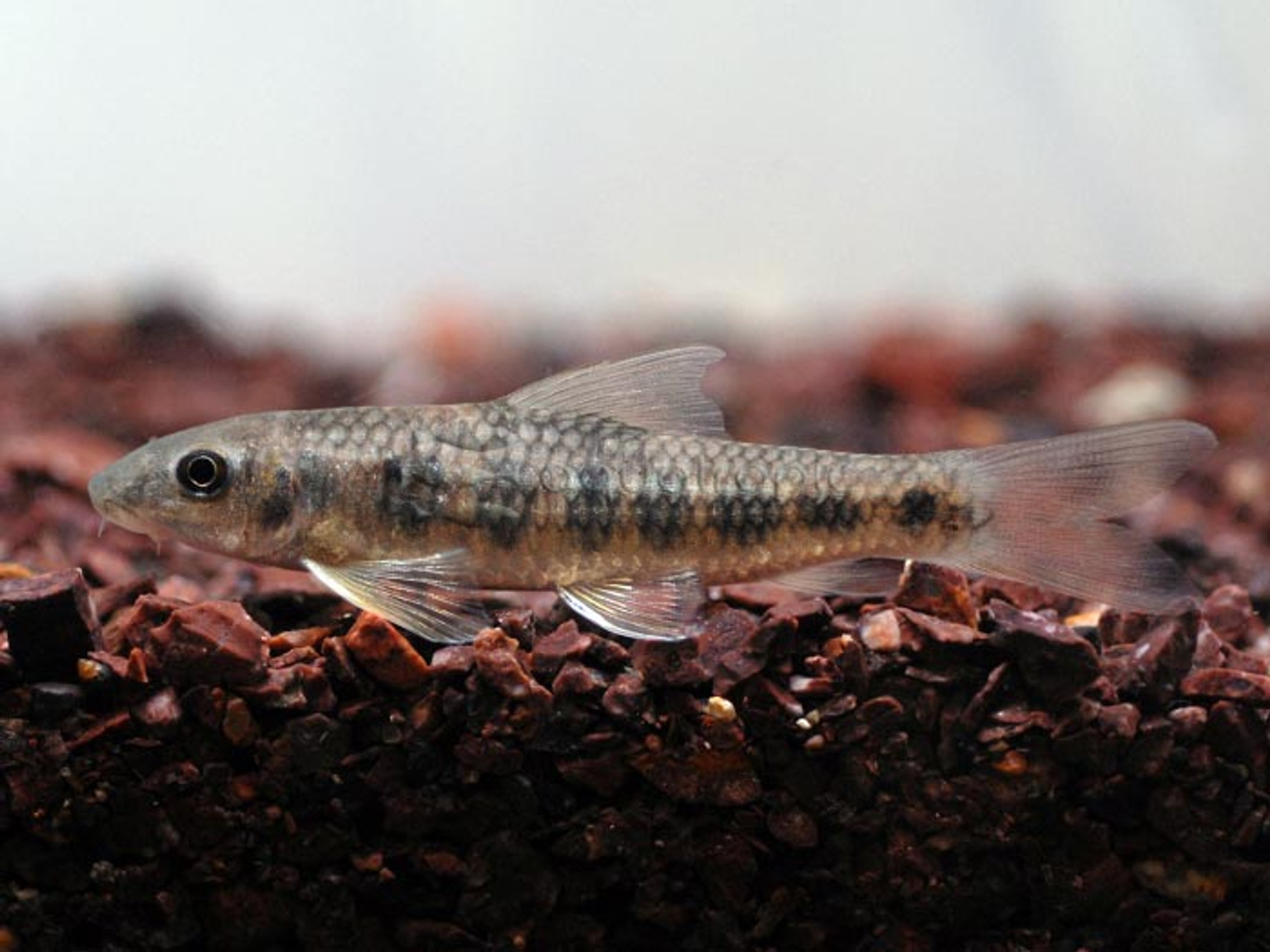Spotted Garra (Garra spilota)

Garra is an enormous genus of minnow-like fishes, with more than 130 species recognized. They occur across the tropical portions of Africa, the Middle East, and Asia, found in a variety of freshwater habitats, but most often in swiftly flowing rivers. There’s even one species from Iran which has adapted to caves, losing its eyes and skin pigmentation in the process.
The group ranges in size from diminutive 2-inchers to the giant G. theunensis from the Mekong Basin, which reaches around a foot in length. But in spite of all this diversity in form and function, aquarists tend to know this group from a single species, Garra flavatra, the Panda Garra. This industrious little black and yellow species from Myanmar has become a hit thanks to its peaceful disposition and an appetite for algae. Of course, there are others in the genus who are just as amenable, so let’s meet one.
Garra spilota, the Spotted Garra, is a handsome fellow that comes to us from the bamboo-covered coastal mountains of Rhakine in Myanmar, where it can be found in streams that form part of the Irrawaddy River drainage. Little is known about it in the wild, and the species was only discovered in 1998 and not named until 2004. To date, nothing else has been written about its ecology or distribution.
At roughly 3 inches in length, this species is nearly identical in size to its more famous cousin, but the patterns couldn’t be more different. G. spilota is named after the series of spots appearing along its sides, and mature specimens develop a lovely amber hue in their fins. This makes for a subtly beautiful aquarium bottom-dweller.
Garra are social creatures and should be kept in small groups. While this genus is often marketed as an “algae eater”, they are more accurately described as omnivores and should be fed a varied diet. They will certainly help clean up algal films from rocks and plants, along with seeking out any other foods that might settle to the bottom.